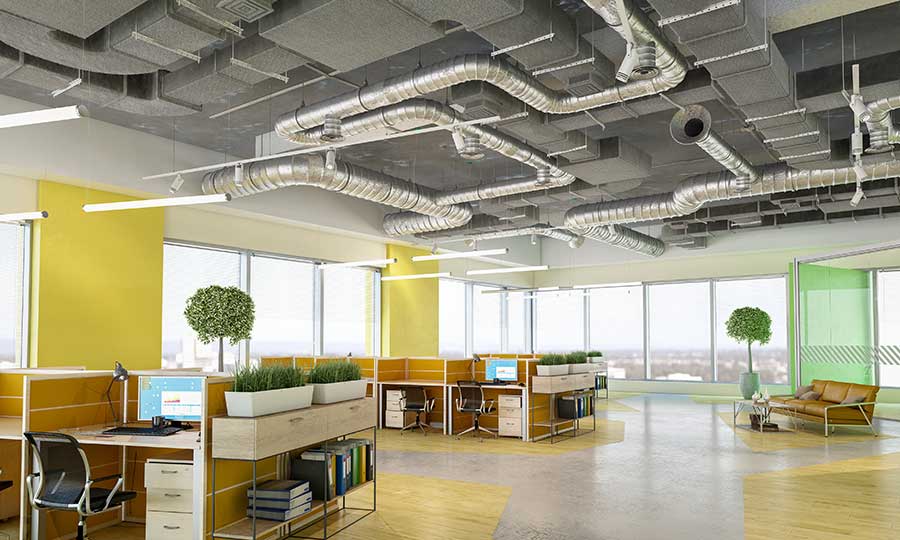How your company’s office is arranged, how much space you provide each worker, whether you utilize cubicles or wide open lounges, the lighting, and whether or not there is any sign of Mother Nature within the workspace all effect productivity.
In the last century, it was commonplace — indeed anything less would have been improper — to utilize anything that drove up the cost of keeping an office. Current studies suggest that when workers are happier, they get more done; spending a little more on ambiance is a sound idea that improves the bottom line. Arrange your office and its inhabitants in a way that garners more productivity. It’s all in a day’s work: what you can quantify will grow voluminously when you set the workspace free.
In cramped, congested workplaces where staff space is small, not respected, and not truly their own, work product diminishes. Let the people you trust with your clients, your products, and your money tell you what makes their jobs easier. Listen to workers when they come to you with what may seem like wild ideas for their desks, the conference room, or other areas of the office — and learn about choices that improve productivity through design within your enterprise.
Room Colors and Decor: How They Impact Focus and Productivity
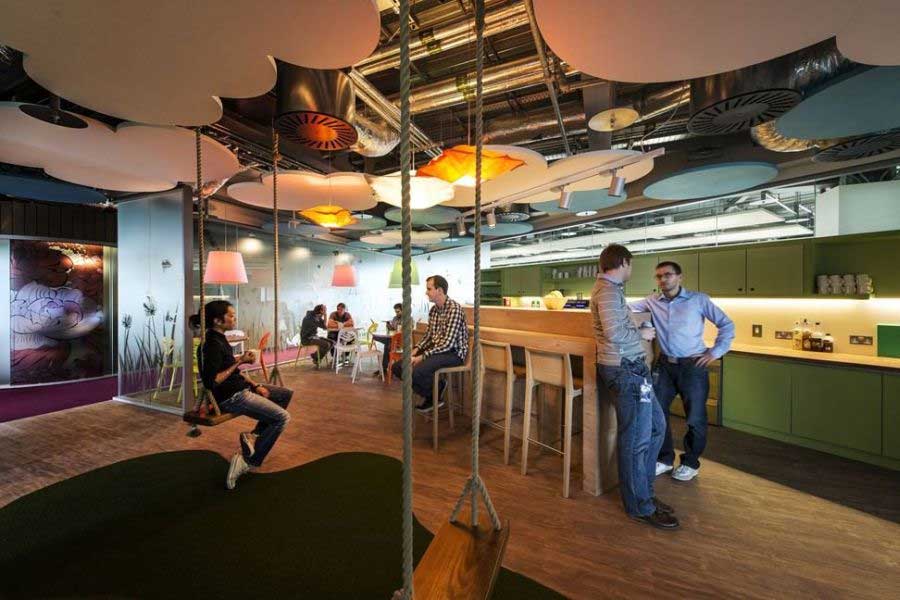
Brightly colored workspaces are the hip new trend, but too much intrusive color can be distracting and slow the pace of work. One of the best ways to avoid too much eye-popping color is to use glass walls, partitions and doors — as transparent ways to avoid traditional walls and doors, they don’t require painting and therefore can’t cause distraction. For those concerned about privacy when using glass walls or partitions, there are options that make this a nonissue. Sandblasted glass and glass crafted with patterns help to maintain discretion from one room of the office to the next.
To decide which colors to paint your office, work with an interior designer, or choose colors that engender a calm ambiance. But calm doesn’t mean boring or weak. A University of Texas study found that the worst colors for workspaces are usually bland, including white, beige, or gray; however other poor color choices for the office are orange and purple. While these colors may not seem to have much in common, the study showed that these colors cause feelings of depression and midday gloominess.
Shades of blue have shown to improve productivity, as have varying hues of green and even yellow. Psychologists suggest the reasons why these colors enhance our ability to engage more thoughtfully in work might have to do with the fact that they are some of the most common colors found out in nature.
Living Greenery: Enliven the Workspace and Bring Workers to Life
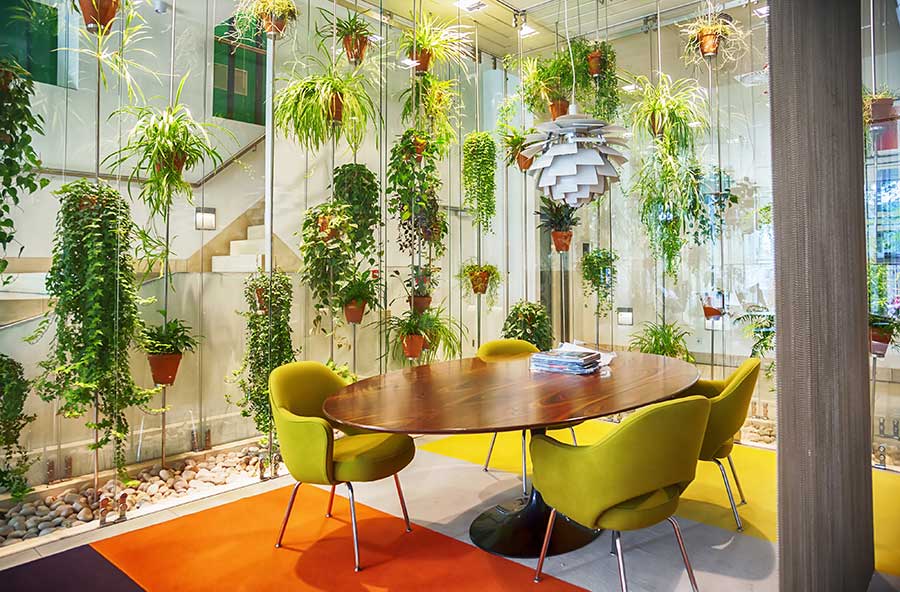
One of the most effective ways to boost health, focus, and mood in your staff is to bring in plants. Generally, whichever are the easiest to maintain are the best choices, but how green your greenery is also matters. Choose plants that offer deep, vibrant greens, and those that are leafy, large, and fitting for your layout. If you don’t have a lot of desk space or floor space in your office where you can place living greenery, hanging plants and those that can be planted in wall-mountable potters are excellent choice.
A word of advice on office plants: Don’t take the advice of adding greenery to mean adding fake plants, no matter how authentic they may look. The reason studies done on plant life in the office result in a recommendation has to do with more than meets the eye. Plants are good for workspaces because they are ornate, but also because they help clarify the indoor air with a natural source of oxygen.
Hold High the Lamp: Why the Type of Lighting in Offices Matters
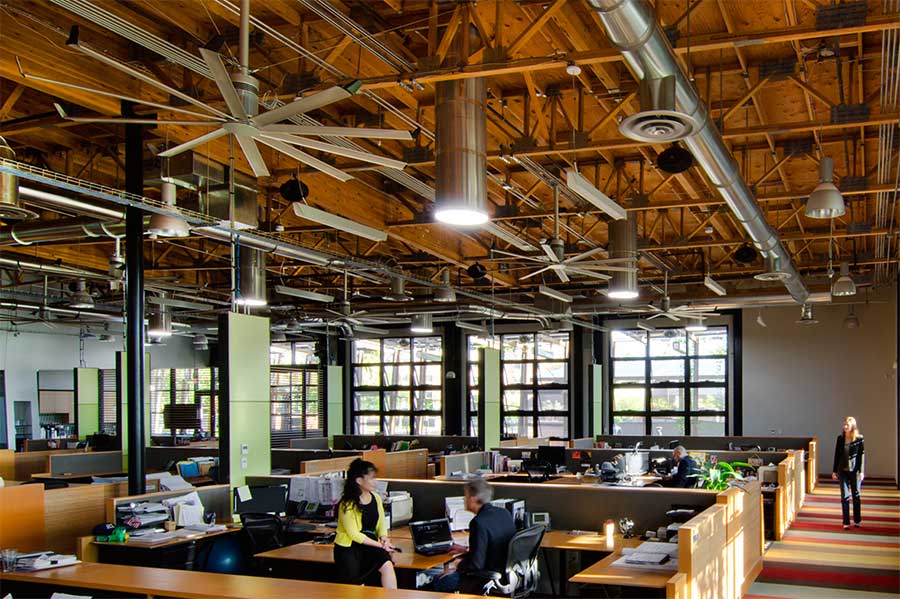
New (and somewhat old) studies suggest that the era of fluorescent lighting in offices is over — and with good reason. In his “Fast Company” article, “Your Office’s Fluorescent Lights Really Are Draining Your Will To Work,” Drake Baer explains how worker productivity is dramatically reduced when fluorescent light is at play.
And there are other lighting concerns, too. According to his book, “Visual Ergonomics in the Workplace,” Jeffrey Ashnel explains why specific lighting is unhealthy for workers. For example, lighting at a desk or where a person’s central vision is focused should not vary much from the rest of the area’s lighting. Lighting that causes glare, too much contrast, or outputs bright, white light cause visual and mental fatigue.
The fix for your fixtures: Instead of relying on fluorescent overhead lights and/or high contrast lights that drain the juice out of your staff, use as much natural light as possible from skylights, windows, and even open doors to the outside, weather (and allergies) permitting. Switch out old lighting with updated lights. Space out light fixtures and lamps uniformly so that lighting throughout the workspace is uniform — those who come in early or stay late will appreciate this especially, since they won’t have the benefit of the sun to keep them alert.
Wide Open Office Spaces and Transformable Areas Increase Productivity
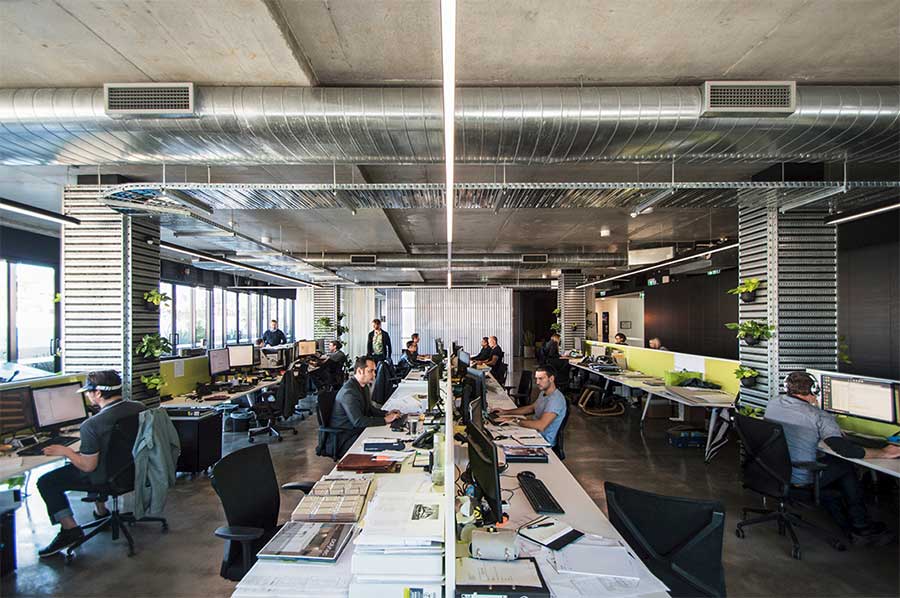
When employees are encouraged to converge in large, open spaces to work, they simply accomplish more. But there’s a little more to it than that. Allow workers who have a long-term project, short-term assignment, or a client in common to work in unison in your office’s lounge, amphitheater, conference room, or other big place where they can have an open exchange of ideas and create effective dialog. If you fear the space is too big, consider the use of sliding glass walls or doors to turn one extremely large room into a place that can be transformed into several smaller spaces. If you have several groups of employees working on many different projects, sliding walls and moveable glass partitions allow them to all work in large spaces at once while maintaining focus and keeping disruptive noise levels to a minimum.

